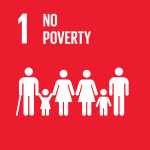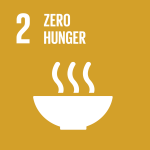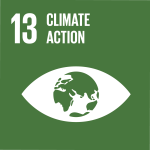
Agriculture is the backbone of Cambodia’s economy, employing 37 percent of the labour force. Yet, many rural communities depend on rain-fed irrigation and face the growing challenges of extreme heat and drought. These conditions threaten both food security and farmers’ incomes. In fact, by 2040, extreme heat could reduce crop yields in Cambodia by 10–15 percent. Addressing this challenge requires practical solutions to help communities adapt and thrive.
HEKS-EPER, a non-profit foundation, works with smallholder farmers in the provinces of Preah Vihear, Battambang and Kampong Thom to introduce cover cropping—a simple and affordable farming practice that improves soil health, boosts crop yields and strengthens resilience to heat and drought.
With support from the UNDP-Adaptation Fund Climate Innovation Accelerator (AFCIA), HEKS-EPER has been scaling up its work, establishing 331 hectares of regenerative agriculture and training 1,600 farmers, 7 in 10 of them women, in cover crop cultivation and care.
Cover crops are planted on fallow fields between harvests and typically include legumes and grasses. Legumes enrich the soil with nutrients, while grasses capture excess nutrients, preventing them from reaching waterways. Together, they support pollinators, improve soil structure and enhance water retention, helping crops withstand dry spells and reducing erosion.
“Paddy rice plantation is one of the main incomes for my family. I have practiced this rice cultivation since my parents’ time. I noticed that my current rice yield is not as good as it used to be, even if we have used some agro-chemical fertilizer. The soil where I planted cover crops looks different and is in better condition. The rice plants are growing better.” – Siv Vanndy, rice paddy farmer from Sereyvong village, Kampong Thom province.
HEKS-EPER delivering farmer training on sustainable agricultural practices in Chheip Keurt village, Preah Vihear province. Photo: HEKS-EPER
Developing cover crop seeds
HEKS-EPER created cover crop seed mixes with three types of legumes and grasses and helped more than 50 farmers (22 of them women) become seed producers, dedicating around 180 hectares to seed production. In 2024, these seed producers grew and sold almost 60 tons of cover crop seeds—enough for 2,000 hectares of rice farms.
Farmers can purchase these seeds for US$75 per hectare, compared to $120 per hectare for chemical fertilizers, and often see a 20 percent increase in rice yields. Observations on farms show that soil turns a healthy brown, moisture levels improve, weeds are reduced and earthworms flourish. Rice crops grown in these soils survive short droughts and thrive.
HEKS-EPER partnered with the Royal University of Agriculture, CIRAD (the French Agricultural Research and Cooperation Organization) and local farmers to develop field trials to verify these observations.
“My rice plants were not all growing well and didn't produce much yield. I wanted to find a solution. Before I planted the cover crop, my rice grains were dry and red. But after using this method, I noticed a big difference. Now, my field is green and the rice grains look clearer and more transparent.” – Om Savun, rice farmer from Kdol village in Preah Vihear province
Cover crops are also being used in young tree farms, such as cashew plantations, filling spaces between young trees to support growth. This approach has reached 560 new farmers and has the potential to expand further.
Om Savun in her cover crop field, where she’s growing a mix of legumes and grasses to fertilize the soils before planting paddy rice. Photo: HEKS-EPER
Scaling up and future plans
HEKS-EPER is scaling up the initiative through agricultural cooperatives, workshops and demonstration plots, encouraging farmers to share knowledge. Early adopters have created video testimonies and actively mentor others at events and on social media.
“My rice yield increased from 32 bags (1,600 kg) to 48 bags (2,400 kg), and I’m very happy about it. This year, I’m using cover crops again and sharing my experience with my neighbours in the community.” – Om Savun
Through community consultations using a human-centered design approach, HEKS-EPER identified that 5–10 percent of rice farmers with very short crop cycles cannot grow cover crops between harvests. The organization developed an organic liquid fertilizer for them, named as ‘natural growth’, made from cover crop cuttings, providing the same benefits without planting the crops.
The success of cover crops—whether for rice, tree farms or fertilizer production—strengthens smallholder farmers’ resilience against extreme heat and drought. In Cambodia, this practice is a vital climate adaptation measure, supporting farmers’ livelihoods, improving soil health and ensuring long-term food security.
Spreading information through leaflets at the farmer workshops in Meourn Reach village, Kyong commune, Preah Vihear province. Photo: HEKS-EPER
*
Supported by financial contributions from the Adaptation Fund and the European Union, the UNDP-AFCIA programme has awarded 44 micro and small grants to locally led organizations across 33 countries worldwide, accelerating their innovative solutions to build resilience in the most vulnerable communities.
UNDP-AFCIA is one of two featured programmes under the Adaptation Innovation Marketplace (AIM), a multi-stakeholder strategic platform that promotes scaled-up adaptation at the local level.



